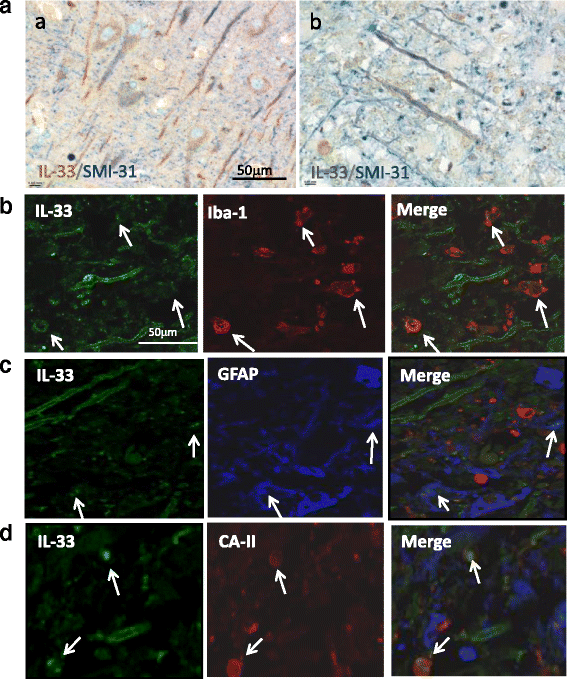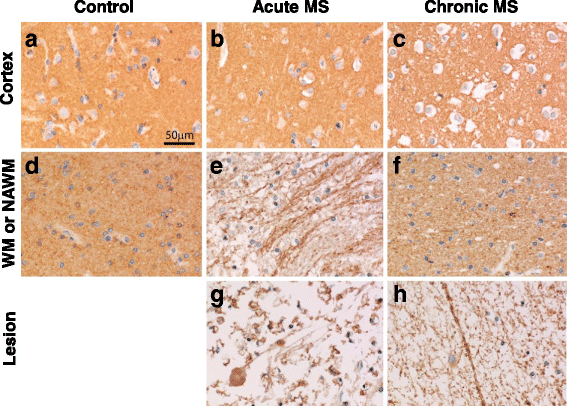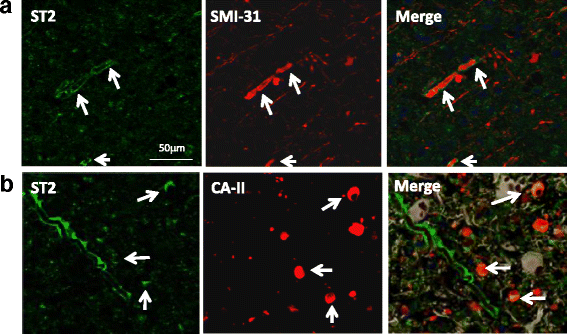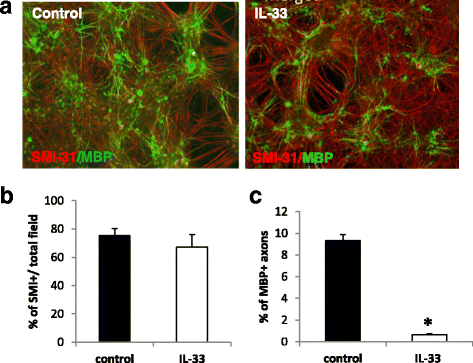Role of IL-33 and ST2 signalling pathway in multiple sclerosis: expression by oligodendrocytes and inhibition of myelination in central nervous system
- PMID: 27455844
- PMCID: PMC4960877
- DOI: 10.1186/s40478-016-0344-1
Role of IL-33 and ST2 signalling pathway in multiple sclerosis: expression by oligodendrocytes and inhibition of myelination in central nervous system
Abstract
Recent research findings have provided convincing evidence indicating a role for Interleukin-33 (IL-33) signalling pathway in a number of central nervous system (CNS) diseases including multiple sclerosis (MS) and Alzheimer's disease. However, the exact function of IL-33 molecule within the CNS under normal and pathological conditions is currently unknown. In this study, we have mapped cellular expression of IL-33 and its receptor ST2 by immunohistochemistry in the brain tissues of MS patients and appropriate controls; and investigated the functional significance of these findings in vitro using a myelinating culture system. Our results demonstrate that IL-33 is expressed by neurons, astrocytes and microglia as well as oligodendrocytes, while ST2 is expressed in the lesions by oligodendrocytes and within and around axons. Furthermore, the expression levels and patterns of IL-33 and ST2 in the lesions of acute and chronic MS patient brain samples are enhanced compared with the healthy brain tissues. Finally, our data using rat myelinating co-cultures suggest that IL-33 may play an important role in MS development by inhibiting CNS myelination.
Keywords: IL-33; Multiple sclerosis; Myelination; Oligodendrocyte; ST2.
Figures






References
MeSH terms
Substances
Grants and funding
LinkOut - more resources
Full Text Sources
Other Literature Sources
Medical

